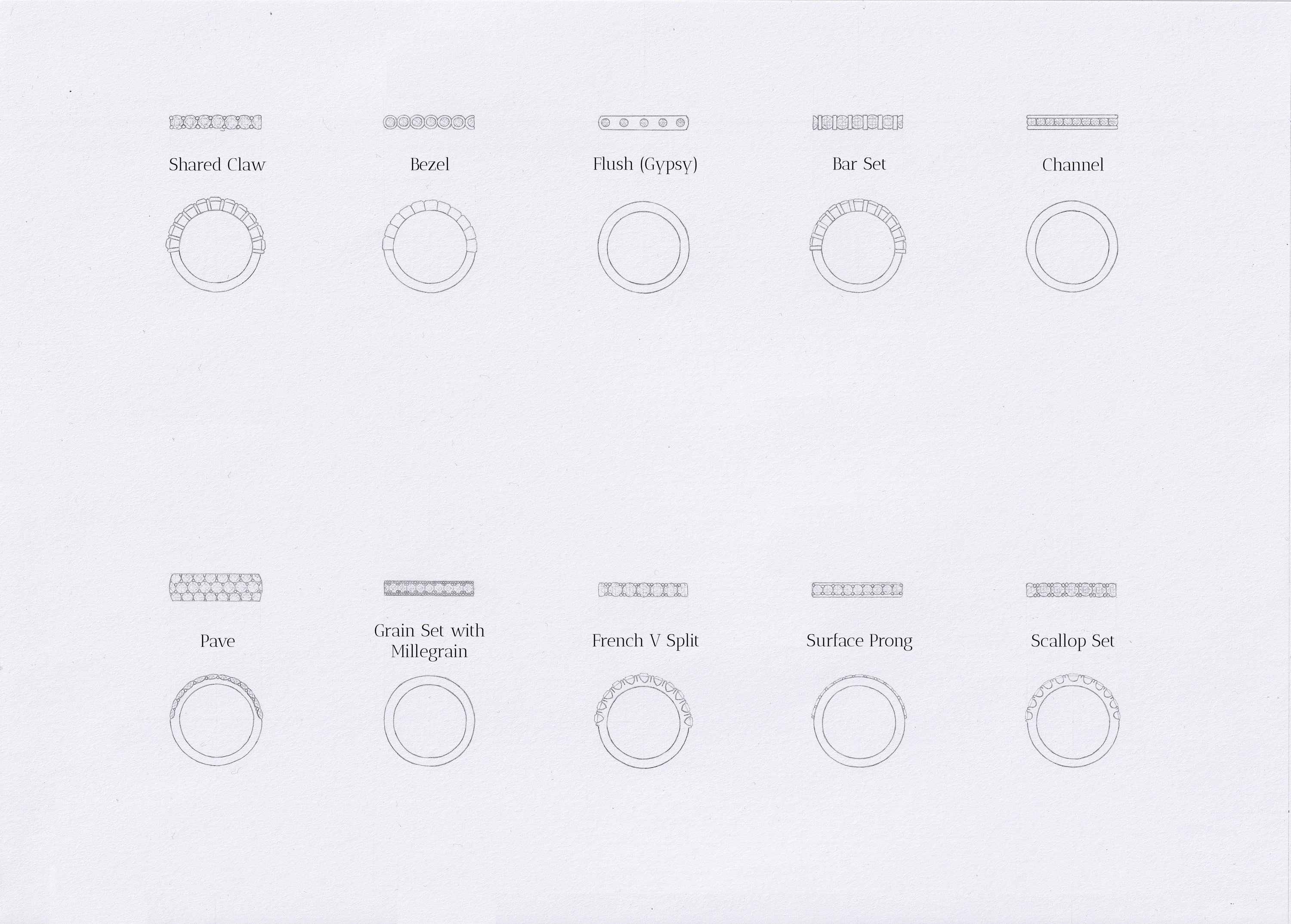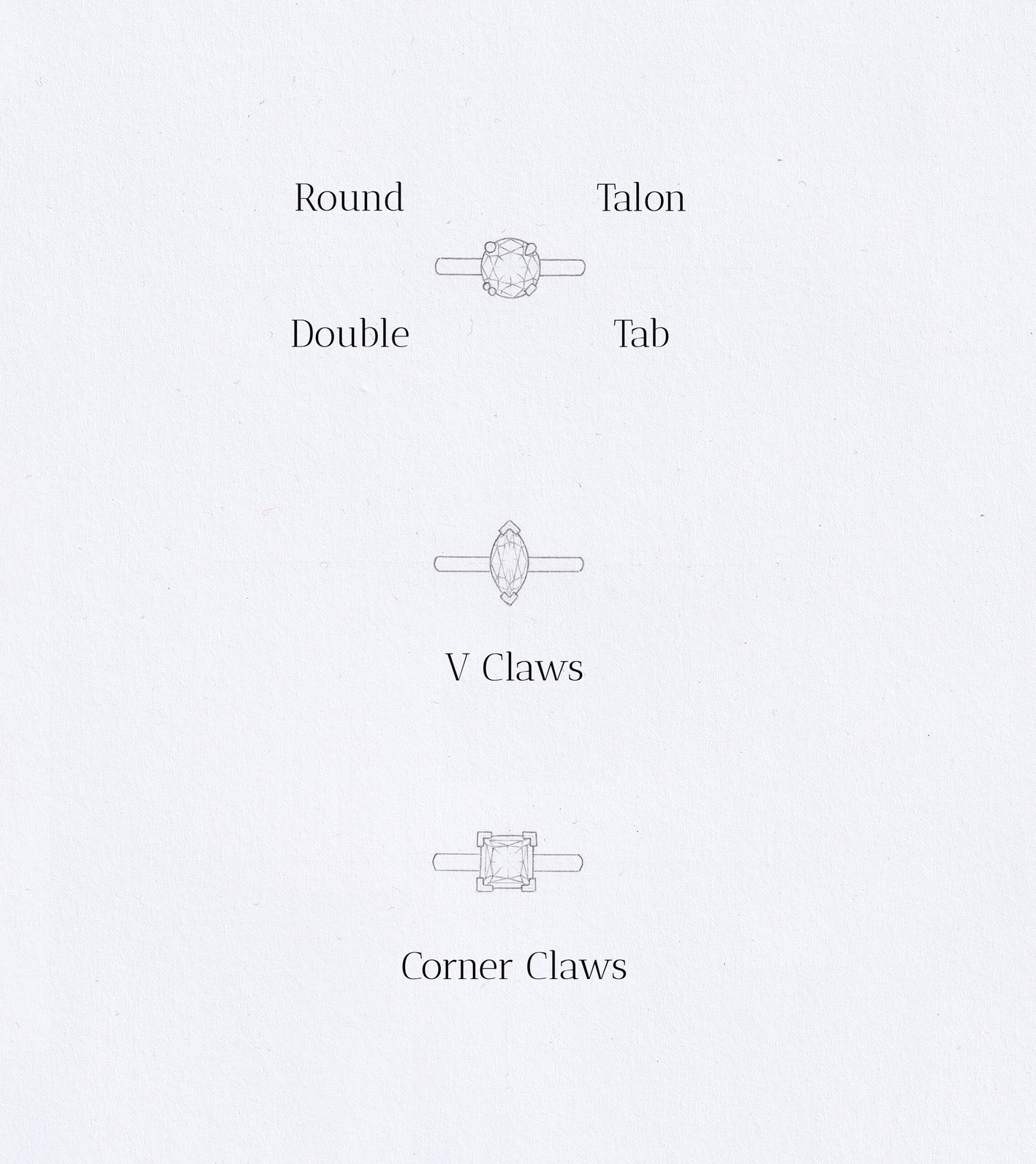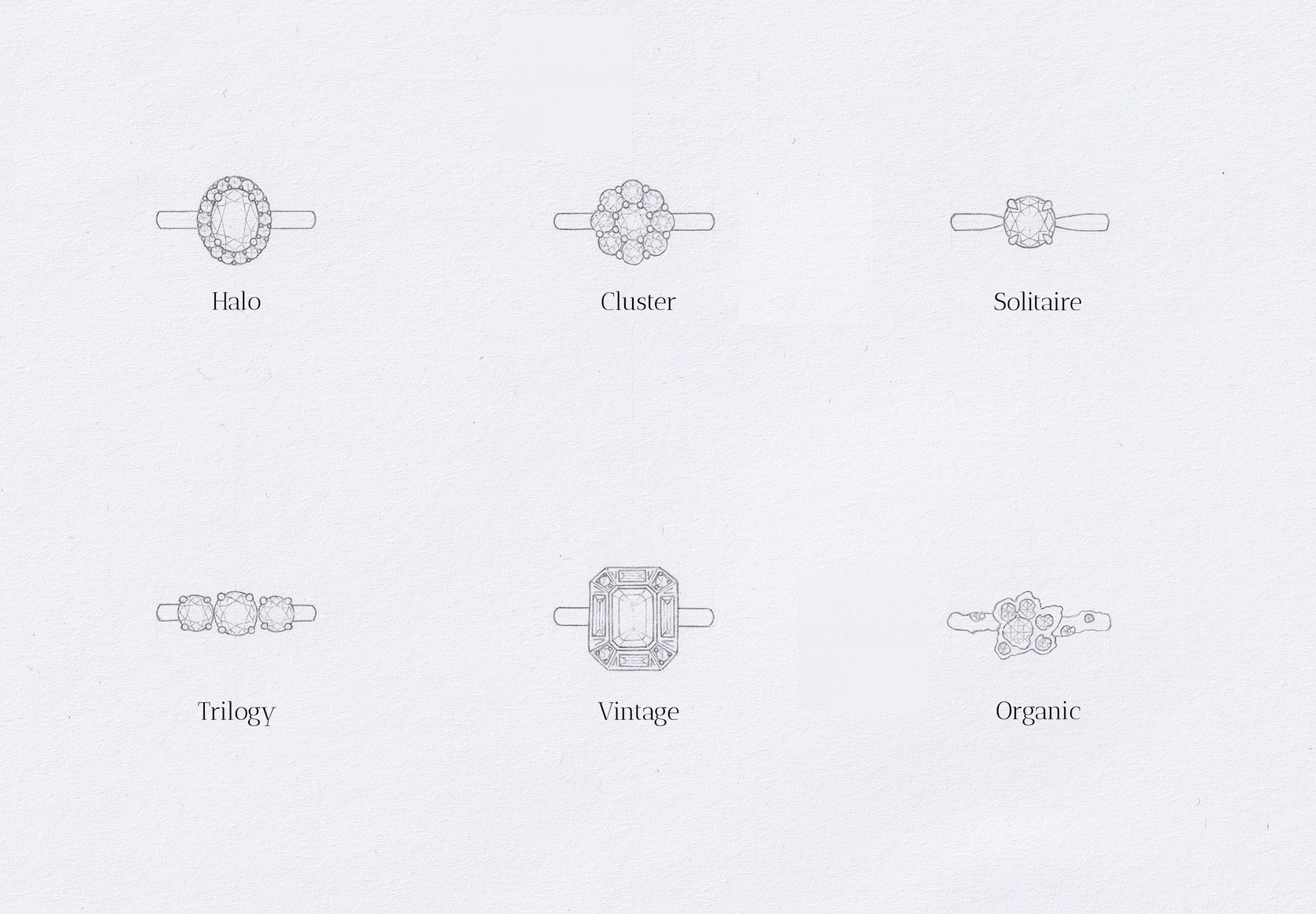Jewellery Settings & Styles: What’s Right For You?
When it comes to designing bespoke jewellery, there are an abundance of options and styles to pick from. Whittling down what you like, what works together and what will suit your lifestyle is part of the process. These choices can completely change the look and feel of a piece of jewellery, so understanding what you’re looking for is key. So how can you choose these elements if you don’t know what the options are? Here, we take you through some of the most common settings and styles that will help you in conjuring up your dream piece of bespoke jewellery.
Settings
The setting refers to how the stones are placed and held within the jewellery. Most thought about in reference to rings, the setting style should be considered carefully when commissioning a bespoke piece. If you’re a particularly active or manual person, a high prong setting will likely snag and knock on things and a bezel setting may be better suited to you. Below we look at the more usual setting styles.
Claw/Prong - This is the most readily thought about type of setting, and it’s where metal wires (claws or prongs) hold the gemstone in position. The number and type of claws can vary, but 4 and 6 are the most common number and we look at different claw types later.
Bezel - One of the more secure and protective settings, this is where the gemstone is completely encircled by metal and sits just above the surrounding metal.
Flush/Gypsy - With this setting type, the stone is sunk into the metal and sits just below the surface. This protects the stones but also gives a very distinctive, more casual style.
Tension - A setting with real flare, this is where the stone appears to be set floating between the tensions on the metal band.
Channel - Often seen in wedding bands, the stones are set between two walls of metal without any claws.
Millegrain - An association with antique jewellery, this setting is mostly for decoration and a tiny row of beads are placed on the edge of the setting.
Pave - A setting style that gives an illusion of a shimmering surface. Smaller gems are arranged in a pattern, row, or line.

Different Setting Styles
Claws
The claws, or prongs, are the pieces of wire that hold a gemstone in place. They can be quite delicate, and it’s recommended that you have them checked periodically in case they need re-tipping or replacing. They can also be designed in various ways and will change the look and feel of a design quite significantly.
Round Claw – The most common of the claws and one you’ll most readily recognise. This classic design has a soft, rounded end to the claw.
Talon Claw – Becoming increasingly popular, the pointed prong gives a sleek, modern look.
Tab Claw – Less popular, but with the right design, this squared off prong can be very distinctive.
Double Claw – Exactly as it sounds, this version doubles the claws at each point.
V or Corner Claw – Used on the delicate exposed ends of stones like the princess, pear or marquise shapes to protect them, this prong encases the tip of the gem.

Different Claw Styles
Styles
When it comes to the style of a ring, this is more about the general category that it falls within, like halo, solitaire, and trilogy. You can combine different settings within a style, like having a cluster ring that has a central bezel set stone and then claw settings on the outer stones. It all comes down to a matter of personal preference! Below we highlight the most popular styles.
Solitaire – The solitaire (a single stone ring) is probably the most common engagement ring style as it exudes an elegance and versatility to it. By going for a single gemstone, it allows a whole host of options for the rest of the ring: setting alternatives, side set stones, different style shanks etc. It’s also worth noting that the solitaire does not need to be a round brilliant diamond either! There are lots of choices for stone shape too.
Halo – For those that like to add a little more to their ring, pendant or earrings, an encompassing ‘halo’ of smaller stones will surround the central stone. A halo ring of diamonds will often make the ring appear larger due to the dazzling impact all the stones have together.
Cluster – Another style where multiple stones are used, usually based around a central stone, but the difference between a halo and a cluster is that a cluster ring is made of similar sized stones (the central stone may be larger but probably not more than 40%).
Trilogy – One for the romantics, it represents the past, present and future. A trilogy can be made up of three gemstones of the same size or where the central stone is slightly larger.
Vintage – Anything the has an antique feel to it, so think art deco style inspired rings, target rings (central stone with coloured halos around it), and a coloured central stone halo ring usually in an oval shape.
Organic – This style takes inspiration from nature and involves metal texture, less symmetry, and coloured gemstones.

Different Ring Styles
Don’t Get Set in Your Ways
Knowing what settings and styles you like will help you narrow down the exact piece of bespoke jewellery you are after. And it’s fun to delve into what the possibilities are with all the options! If you need some help though, Sophie would love to talk through your ideas with you. Get in touch to start your story.